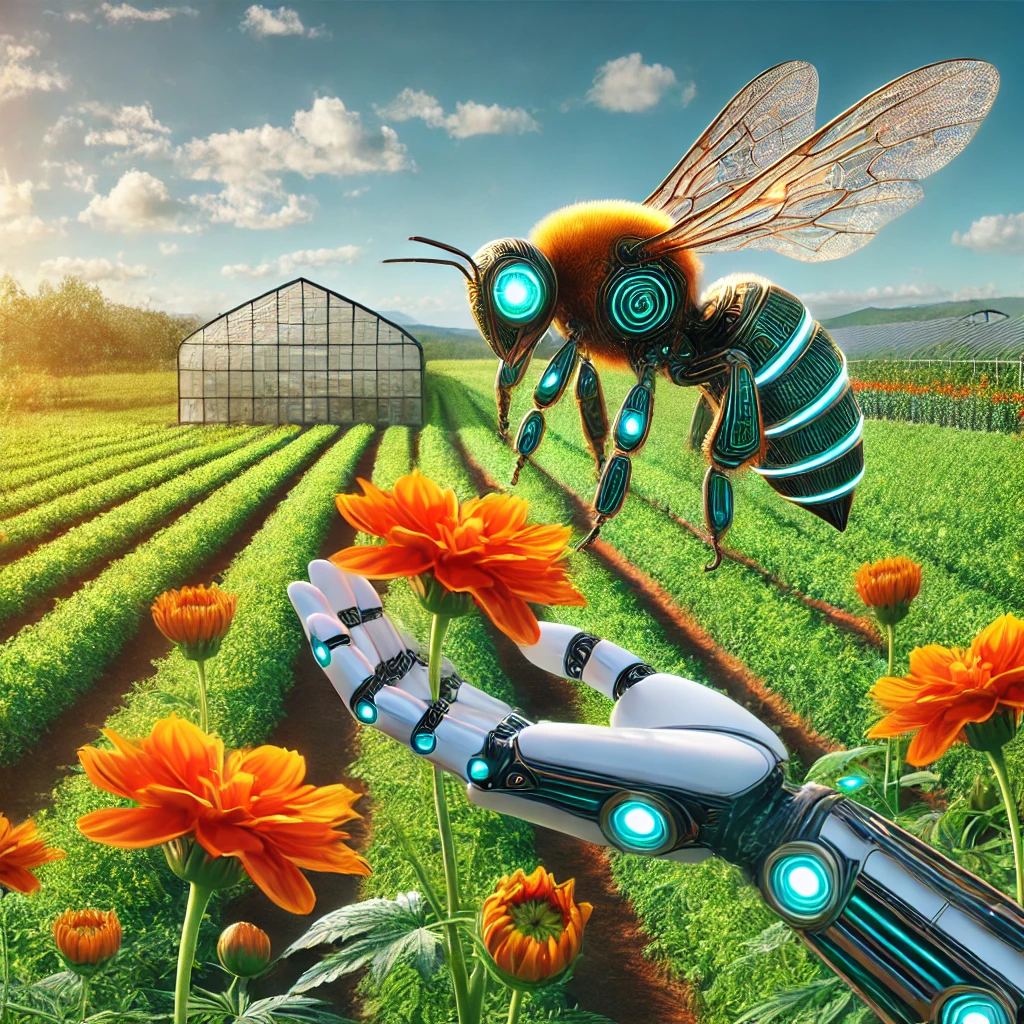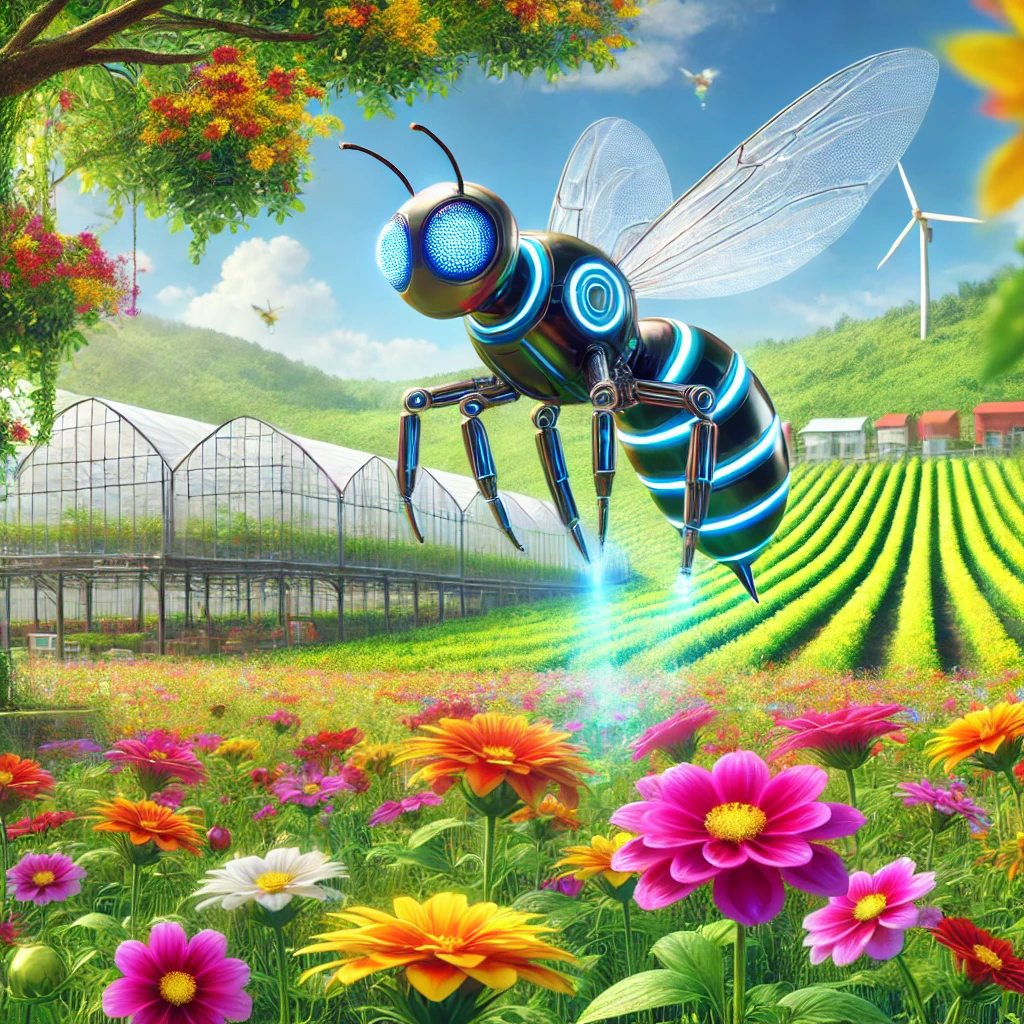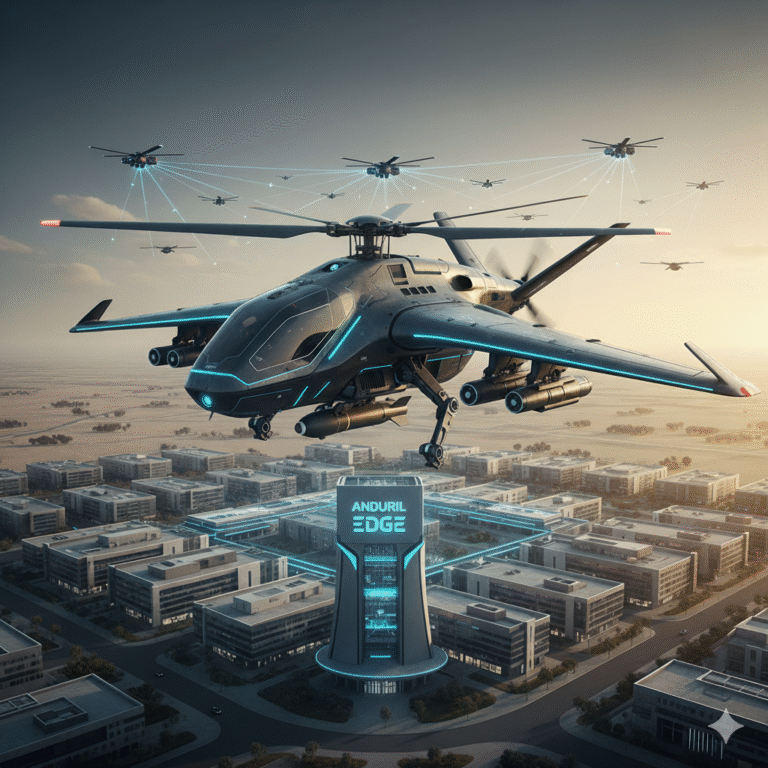
In a groundbreaking development, scientists have engineered an artificial bee capable of mimicking the critical task of pollination. This remarkable invention promises to address the alarming decline in natural pollinators. It also presents an innovative solution for sustainable farming. By bridging technology and nature, researchers are paving the way for a future where artificial bees supplement or even replace their natural counterparts in certain agricultural contexts. Let’s delve into the science, potential applications, and broader implications of this cutting-edge technology.
The Importance of Pollination
Pollination is the backbone of agricultural productivity. Roughly 75% of the world’s crops rely on pollination, with bees playing a pivotal role in this natural process. However, factors such as habitat destruction, climate change, and excessive pesticide use have led to a significant decline in bee populations worldwide. This phenomenon, often referred to as “pollinator crisis,” threatens global food security. Moreover, it impacts the stability of ecosystems.
Without efficient pollinators, farmers face reduced yields. This impacts essential crops like fruits, vegetables, and nuts. The economic implications are vast, with billions of dollars worth of crops at stake annually. Recognizing the urgent need for alternatives, scientists have turned to technology for solutions. This has led to the development of artificial pollinators.
The Rise of Artificial Bees
Researchers at premier institutions like the Indian Institute of Science (IISc) have achieved a significant milestone. They have created a robotic bee capable of efficient pollination. This artificial pollinator, often referred to as a drone bee, is meticulously designed to replicate the behavior and efficiency of natural bees.
Equipped with advanced robotics, lightweight materials, and precise sensors, the artificial bee can hover over flowers. It collects pollen and transfers it to other plants. Importantly, the robot mimics the swift movements and hovering capabilities of natural bees. This ensures that pollination is conducted effectively. Furthermore, it operates under human supervision, allowing for controlled and targeted pollination. This is especially useful in areas where natural bees are scarce or absent.
Key Features and Technology
The artificial bee incorporates a range of sophisticated technologies to fulfill its purpose:
- Lightweight Design: The robot is engineered to be extremely light, enabling it to hover and navigate with ease. Its design ensures minimal energy consumption and prolonged operational efficiency.
- High Precision Sensors: Advanced sensors allow the bee to identify flowers, collect pollen, and deposit it accurately. This precision ensures optimal pollination rates, akin to those achieved by natural pollinators.
- Swift and Controlled Movements: Mimicking the rapid and agile flight of bees, the artificial pollinator can navigate complex environments. It maintains stability even in challenging conditions.
- Eco-Friendly Applications: By reducing the need for chemical fertilizers and pesticides, the artificial bee supports sustainable farming practices. This approach enhances agricultural productivity while protecting the environment.
Potential Applications
The advent of artificial bees opens up a myriad of possibilities across various sectors:
- Agriculture: Artificial bees can address pollinator shortages in farms, particularly in regions where natural pollinators are declining. Farmers can deploy these robotic pollinators during critical flowering seasons to ensure optimal yields.
- Controlled Environments: In greenhouses and vertical farms, where natural pollinators may not be viable, artificial bees can provide a reliable alternative for pollination.
- Research and Conservation: The technology can be used to study plant-pollinator interactions in controlled settings. This aids conservation efforts and advances our understanding of pollination biology.
- Crop Diversification: Artificial pollinators can facilitate the cultivation of diverse crops, including those that depend heavily on pollination. This promotes agricultural biodiversity.
Challenges and Ethical Considerations
While the promise of artificial bees is immense, there are challenges and ethical questions that must be addressed:
- Cost and Accessibility: The development and deployment of artificial bees require significant investment. Ensuring that this technology is affordable and accessible to small-scale farmers will be crucial for widespread adoption.
- Ecological Impact: Introducing artificial pollinators into natural ecosystems may have unintended consequences. Careful research is needed to understand how these robots interact with plants and wildlife.
- Over-Reliance on Technology: While artificial bees can supplement natural pollinators, they should not replace efforts to conserve and restore natural bee populations. A balanced approach is essential to ensure long-term ecological stability.
- Ethical Concerns: Some critics argue that the creation of artificial pollinators could divert attention from addressing the root causes of pollinator decline, such as habitat loss and pesticide use.
A Constructive Perspective
The development of artificial bees represents a remarkable fusion of biology and technology. However, it is important to view this innovation as a complementary tool rather than a standalone solution. Conservation of natural pollinators must remain a priority. They play irreplaceable roles in ecosystems beyond pollination.
Policymakers, scientists, and farmers must collaborate to create a holistic strategy that includes:
- Investments in Pollinator Conservation: Protecting habitats, reducing pesticide use, and promoting bee-friendly farming practices are essential steps toward sustaining natural pollinator populations.
- Responsible Deployment of Artificial Bees: Clear guidelines should be established to regulate the use of artificial pollinators. This ensures they are deployed only in areas where natural pollinators cannot meet the demand.
- Public Awareness and Education: Educating communities about the importance of pollinators and the role of technology can foster greater appreciation for biodiversity and innovation.
The Road Ahead
As artificial bees transition from research labs to real-world applications, they hold the potential to revolutionize agriculture. By alleviating the pressures on natural pollinators and enhancing crop productivity, these robotic innovations could play a pivotal role in addressing global food security challenges.
However, the ultimate goal must be to strike a balance between technological advancement and ecological preservation. By working hand in hand with nature, we can create a future where agriculture thrives sustainably and biodiversity flourishes.
The artificial bee is not just a technological marvel. It is a reminder of the intricate connections between humanity, technology, and the natural world. As we continue to innovate, let us ensure that our progress honors and sustains the delicate balance of life on Earth.
Courtesy: Internet
Read Also:
Unlocking the Secret Language of Plants: A Groundbreaking AI Model Revolutionizes Plant Science
Robots, Honey Bees, and Disease: Three Perspectives on the Next Thousand Years of Pollination







What a thought-provoking read! Artificial bees could transform global agriculture while reminding us of the urgent need for biodiversity conservation.
I love how artificial bees combine AI, robotics, and sustainability—it’s like watching nature and technology evolve together.
The science behind artificial bees is amazing. If developed responsibly, they could balance technology and ecology beautifully.
This is such an innovative approach to revolutionizing agriculture. Imagine the global impact once artificial bees become scalable!
The concept of artificial bees offers a glimpse into how human ingenuity can support nature rather than replace it—brilliant perspective!
It’s incredible how innovations like artificial bees could help farmers maintain yields despite declining natural bee populations.
Thanks for sharing. I read many of your blog posts, cool, your blog is very good.
Fascinating topic! The fusion of robotics and agriculture through artificial bees truly represents the next frontier in food technology.But I have some questions.
I never thought I’d see the day when machines could replace natural pollinators. Artificial bees could be the future of agriculture in a changing climate.
This post captures how artificial bees might become a cornerstone of sustainable farming—bridging technology, ecology, and precision agriculture.
Amazing read! The idea of using artificial bees to support crop pollination shows how innovation can step in where nature struggles.
The concept of artificial bees is fascinating—seeing technology replicate natural pollinators could truly revolutionize agriculture and ensure food security for future generations.